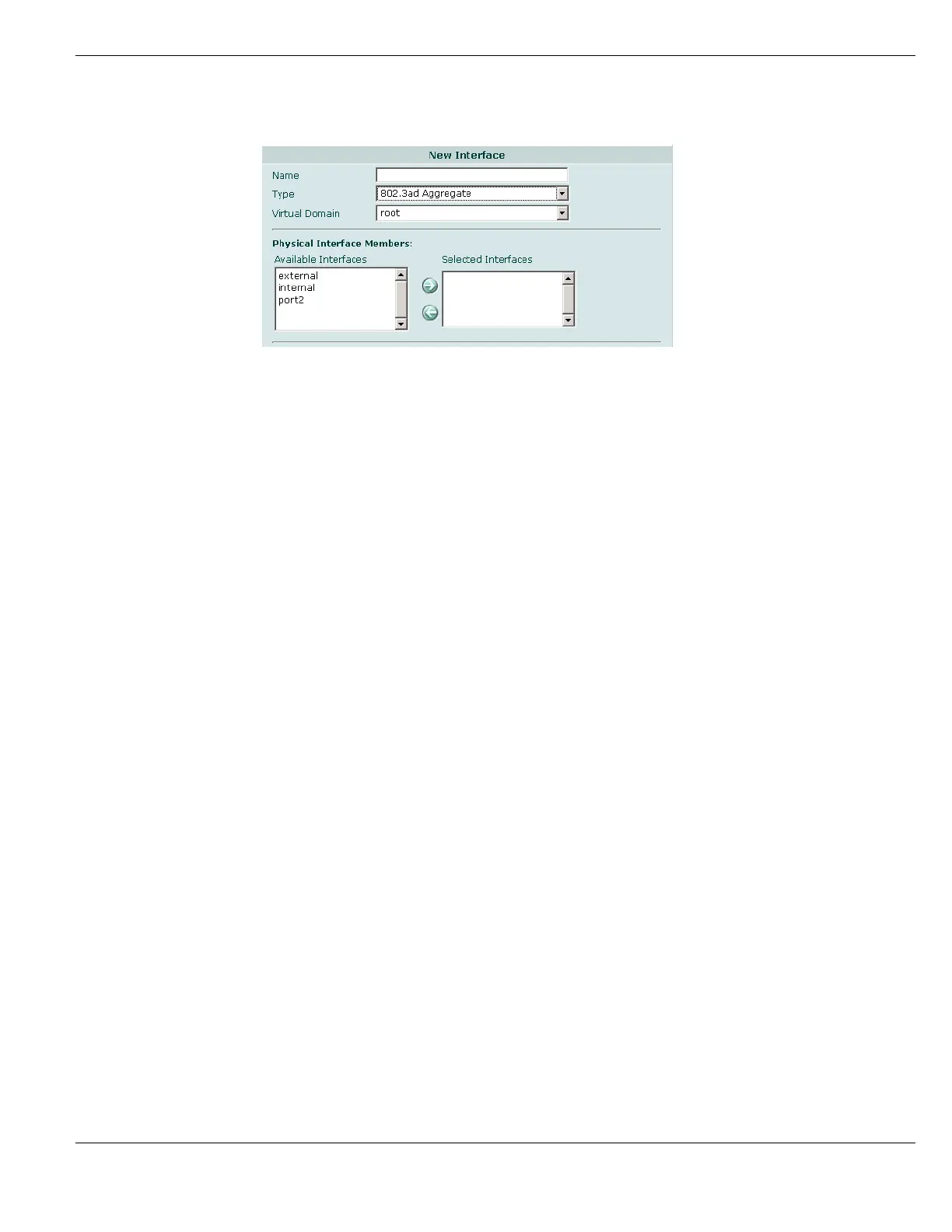System Network Configuring interfaces
FortiGate Version 4.0 MR1 Administration Guide
01-410-89802-20090903 187
http://docs.fortinet.com/ • Feedback
Figure 74: Settings for an 802.3ad aggregate interface
To create an 802.3ad Aggregate interface
1 Go to System > Network > Interface.
2 Select Create New.
3 In the Name field, enter a name for the aggregated interface.
The interface name must be different from any other interface, zone or VDOM.
4 From the Type list, select 802.3ad Aggregate.
5 In the Available Interfaces list, select each interface that you want to include in the
aggregate interface and move it to the Selected Interfaces list.
6 If this interface operates in NAT/Route mode, you need to configure addressing for it.
For information about dynamic addressing, see:
• “Configuring DHCP on an interface” on page 188
• “Configuring an interface for PPPoE” on page 190
7 Configure other interface options as required.
8 Select OK.
Creating a redundant interface
You can combine two or more physical interfaces to provide link redundancy. This feature
allows you to connect to two or more switches to ensure connectivity in the event one
physical interface or the equipment on that interface fails.
In a redundant interface, traffic is only going over one interface at any time. This differs
from an aggregated interface where traffic is going over all interfaces for increased
bandwidth. This difference means redundant interfaces can have more robust
configurations with fewer possible points of failure. This is important in a fully-meshed HA
configuration.
FortiGate firmware on models 300A, 310B, 400A, 500A, 620B, and models 800 and
higher implements redundant interfaces.
An interface is available to be in a redundant interface if:
• it is a physical interface, not a VLAN interface
• it is not already part of an aggregated or redundant interface
• it is in the same VDOM as the redundant interface
• it has no defined IP address and is not configured for DHCP or PPPoE
• it has no DHCP server or relay configured on it

